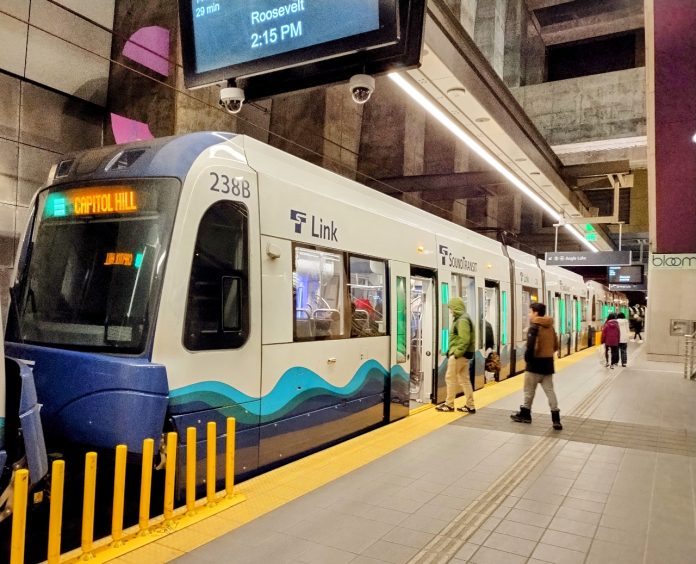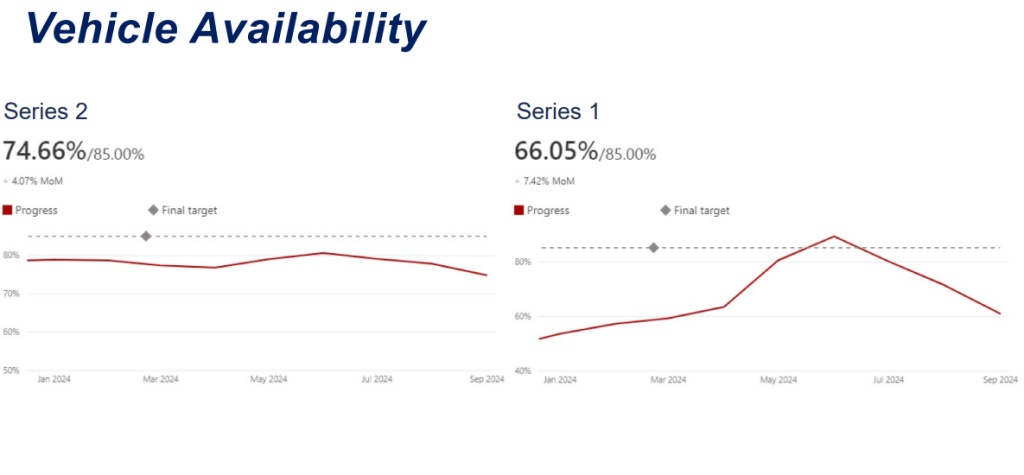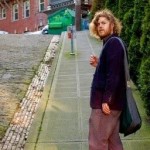
Sound Transit has maintenance work — and resulting light rail disruptions — queued up to address unexpected electrical issues and prep for a full opening of the 2 Line.
Link light rail riders traveling on weekends are likely to encounter service disruptions over the next few months as Sound Transit shuts down parts of the system for maintenance work of both the planned and emergency variety. The disruptions, which will increase travel times and almost certainly bring some headaches for travelers, will bring positive changes for current riders and for the light rail network’s broader expansion.
With the launch of Lynnwood Link on August 30, more people are depending on the 1 Line than ever before, which means service disruptions like these are impacting more and more transit riders across the region. With the goal of scheduling the disruptions during weekends when there are fewer events going on around the region, Sound Transit is trying to minimize impacts. Nonetheless, the biggest way to avoid your day being derailed is to be prepared.
November 8 through 10
Next week’s Link closure will impact Downtown Seattle, with all stations between Westlake and International District-Chinatown fully closed from 10pm Friday until the start of service Monday morning. Sound Transit crews will be working to wrap up tie-in work needed to connect the 1 Line to the 2 Line, integrating their systems together and marking the first time that Sound Transit is set to operate two separate lines on the same set of tracks.
The 2 Line is still on track to start running across Lake Washington to Downtown Seattle and all the way up to Lynnwood City Center station by the end of 2025. That would mark a full opening of East Link promised in the 2008 Sound Transit 2 measure, which had been disrupted by construction defects along the I-90 section.
Most of the physical work to tie the two lines together happened in 2020, but there’s still work that needs to happen before Sound Transit can start testing trains next year.

During the weekend closure, trains will be running between Lynnwood City Center and Capitol Hill, as well as between SoDo and Angle Lake, every 15 minutes, with the connecting replacement bus service between SoDo and Capitol Hill running every 10 minutes.
Weekend Link closures are also a great opportunity to use existing buses that bridge across Downtown Seattle, including the Route 48 and Route 8 at Mount Baker Station, the Route 106 along MLK Jr Way S, the Route 60 between Beacon Hill and Capitol Hill (now at 15-minute headways on both Saturday and Sunday), and Routes 70 and 49 between the U District and Downtown.
Sound Transit interim CEO Goran Sparrman told the agency’s board last week that it will be scheduling another three weekend closures to wrap up tie-in work in January and February. Riders should keep that in mind when making weekend plans through the beginning of 2025.
December 7 and 8
A closure over the first weekend in December will bring more immediate benefits for riders, as Sound Transit plans to repair issues with the 1 Line near University of Washington Station. Over the past few weeks, riders may have noticed that northbound trains have been running very slow coming into UW Station. The cause? Damage to Sound Transit’s overhead contact system (OCS), which powers the light rail cars via their pantograph connection.
“That section of the OCS was damaged on Sept. 17 due to a LRV [light rail vehicle] that had a damaged pantograph,” Sound Transit spokesperson John Gallagher told The Urbanist. “The pantograph in turn damaged the OCS. Just how the LRV pantograph was damaged is unclear; the root cause investigation is ongoing. We have examined pantographs on other LRVs and have not seen any other damage. After the OCS was damaged, we were able to repair it enough to return to revenue service, but to complete the repairs we will need to close that section of the track for a weekend.”
The single tracking work will be in effect for the entirety of Saturday, December 7 and Sunday, December 8, and the service pattern for this disruption is going to be unique. Trains will run every 22 minutes between Lynnwood City Center and University District Station, every 22 to 25 minutes between University District and Capitol Hill, and every 15 minutes between Capitol Hill and Angle Lake.
To reduce overcrowding and provide an additional option for riders, Sound Transit will operate a shuttle between Capitol Hill, University of Washington, and University District stations.
Sound Transit ramping up system reviews
Issues like 1 Line trains stalling in the middle of a train tunnel have been happening more regularly, a fact that hasn’t gone unacknowledged by Sound Transit. At the October board meeting, Sparrman spelled out the work that the agency is doing to get a handle on the issues that are happening and chart a path toward more stability, a clear necessity as Sound Transit starts to run more and more miles of trains.
“You already know that urgent analysis has been underway to do an full, independent analysis of our systems: electrical traction, power, light rail vehicles and communications,” Sparrman said. “With the recent events I’ve actually directed additional steps to be taken. We will be conducting independent field condition assessment of all rail and equipment that’s deployed on our system. We will also do deep, detailed analysis of all maintenance records to facilitate […] an independent review of all failures that have occurred since January 1, 2024 to the present moment, to basically identify trends, systemic issues and their potential causes.”
Sparrman noted that Sound Transit is aware of a broader issue with the light rail system’s electrical infrastructure, an issue that they’re seeking additional help on.
“We will be bringing in outside, independent expertise to especially focus on rail-to-ground current analysis — there seem to be a problem with how how that system is actually functioning, as we expand the system and put more load on the system,” Sparrman continued.
Riders may also have been noticing more three-car trains running along the 1 Line, compared to normal four-car trains. This is in large part due to a lack of vehicle availability. It’s not just the older Series 1 Kinkisharyo vehicles having issues, but also the newer Series 2 vehicles manufactured by Siemens. Around 25% of the issues arising with the Siemens vehicles are due to a known brake issue, which Sparrman said Sound Transit would be starting to focus on.
“That is an effort that’s also getting extra attention, starting immediately,” Sparrman said.

“I do want to acknowledge that this work will not solve all our operational problems overnight, but we are committed to take the steps necessary and urgently so that riders can be assured that Link is a reliable, convenient and safe transportation mode,” Sparrman concluded.
The next few years will really put Sound Transit to the test, expanding across Lake Washington, to Downtown Redmond, and to Federal Way while they continue to operate the existing system and deliver promised service levels. The service disruptions this fall and winter are likely to be a pain, but point toward a more positive future.
Ryan Packer lives in the Summit Slope neighborhood of Capitol Hill and has been writing for the The Urbanist since 2015. They report on multimodal transportation issues, #VisionZero, preservation, and local politics. They believe in using Seattle's history to help attain the vibrant, diverse city that we all wish to inhabit. Ryan's writing has appeared in Capitol Hill Seattle Blog, Bike Portland, and Seattle Bike Blog, where they also did a four-month stint as temporary editor.


